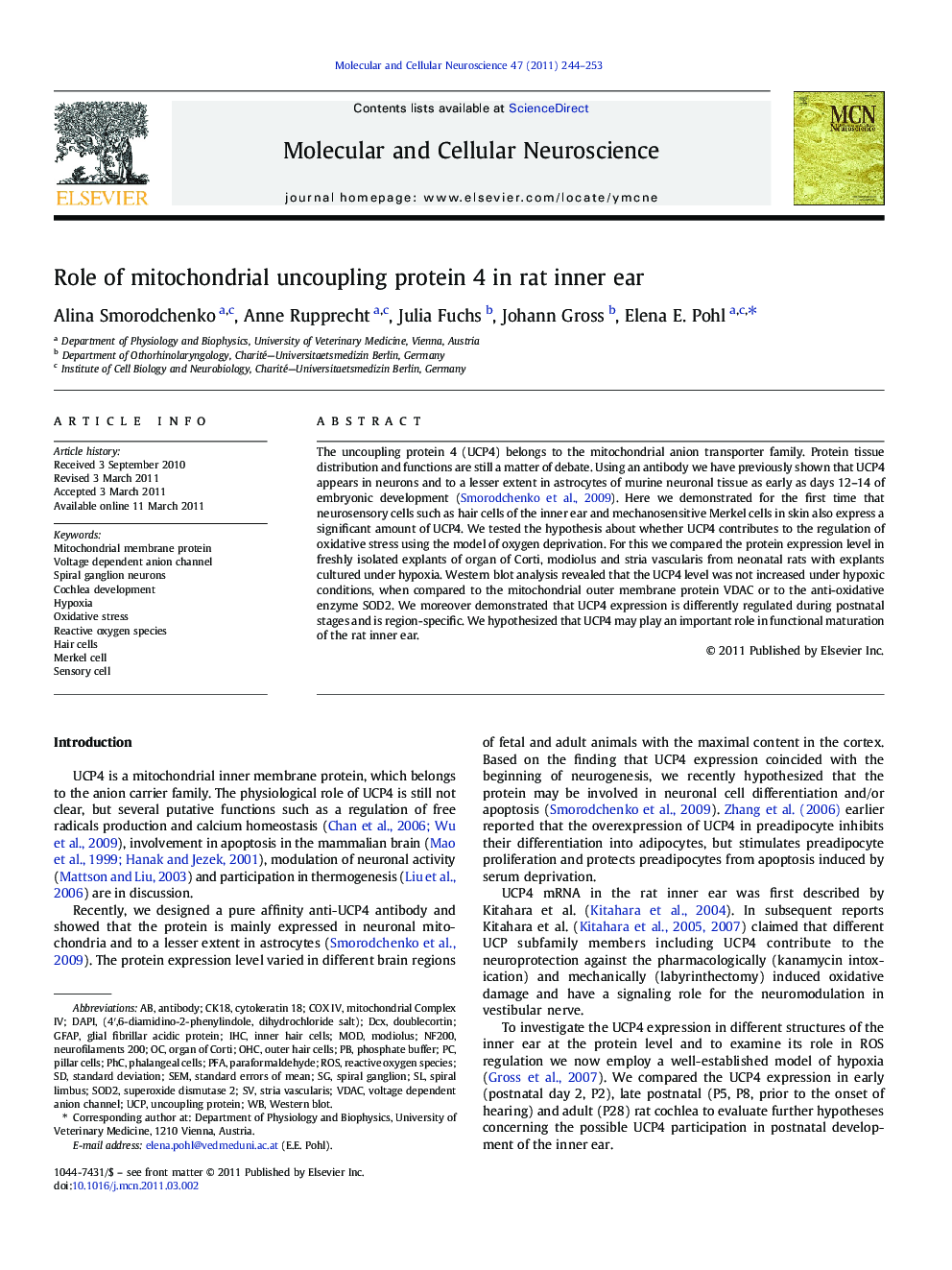| Article ID | Journal | Published Year | Pages | File Type |
|---|---|---|---|---|
| 2198636 | Molecular and Cellular Neuroscience | 2011 | 10 Pages |
The uncoupling protein 4 (UCP4) belongs to the mitochondrial anion transporter family. Protein tissue distribution and functions are still a matter of debate. Using an antibody we have previously shown that UCP4 appears in neurons and to a lesser extent in astrocytes of murine neuronal tissue as early as days 12–14 of embryonic development (Smorodchenko et al., 2009). Here we demonstrated for the first time that neurosensory cells such as hair cells of the inner ear and mechanosensitive Merkel cells in skin also express a significant amount of UCP4. We tested the hypothesis about whether UCP4 contributes to the regulation of oxidative stress using the model of oxygen deprivation. For this we compared the protein expression level in freshly isolated explants of organ of Corti, modiolus and stria vascularis from neonatal rats with explants cultured under hypoxia. Western blot analysis revealed that the UCP4 level was not increased under hypoxic conditions, when compared to the mitochondrial outer membrane protein VDAC or to the anti-oxidative enzyme SOD2. We moreover demonstrated that UCP4 expression is differently regulated during postnatal stages and is region-specific. We hypothesized that UCP4 may play an important role in functional maturation of the rat inner ear.
